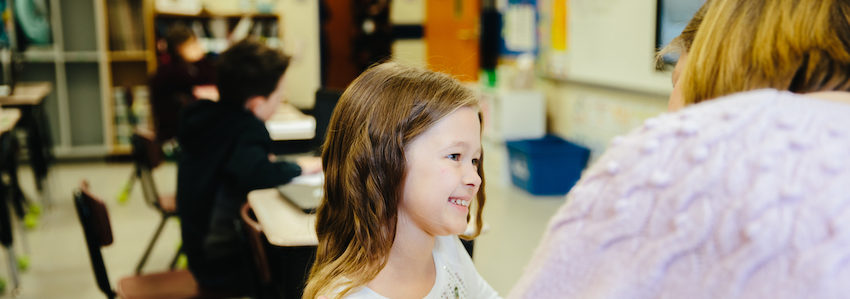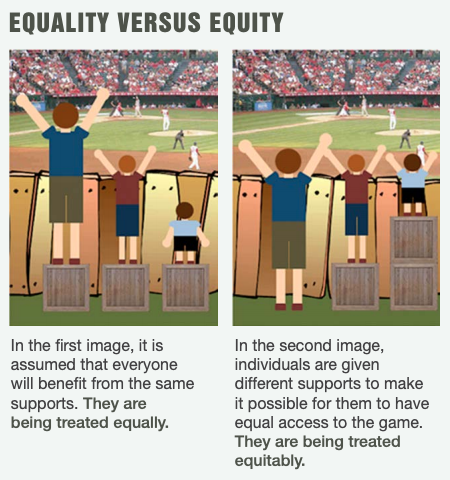

Writing quality individual education plans (IEPs) that give a clear view of a student’s strengths and needs is such an important part of a special education teacher’s job. For all other teachers, IEP best practices can help support student learning during COVID-19 and as we begin to move past the restrictions of the pandemic.
I spent the first 13 years of my K–2 teaching career performing academic testing for eligibility for special education services and then writing eligibility determination paperwork and IEPs for my students. It has been almost nine years since I wrote a plan (I left the workforce for a few years after the birth of my third child), but once a teacher, always a teacher. Since leaving the classroom, I have volunteered as an advocate for families as they navigate the evaluation and IEP process in their school.
A lot has changed in the last decade. Many states now require dyslexia screening of young students, for example, which leads to earlier identification and earlier access to services. But one thing has stayed the same: a well-written IEP that is read and understood by all members of a learning team is imperative to student success.
Spring is IEP season, and as you begin the work of updating IEP goals and amending plans for transitions from one grade to the next, it will be important to pay close attention to how pandemic and post-pandemic learning needs impacted children with special needs. COVID-19 changed everything, including how students with disabilities access instruction and make progress on their IEP goals. Here are some things to consider as we learn and grow after this unprecedented time.
When the pandemic started, many annual IEP review meetings happened late and/or virtually instead of in person in many areas of the country. This may still be the case for some teachers, students, or caregivers who have compromised immune systems. Whether these meetings happen in person or remotely, it is important for each member of the learning team be present to ensure their communication with students and families is clear and that they check frequently for understanding.
Each member of a learning team is important and needs to understand both their role and the information in the IEP.
When discussing the IEP, it is important to accentuate the positive but not minimize the areas of need. Keep the focus on the goals and the plan that is in place to ensure the student can achieve them. The staff member acting as an advocate for the family may need to pre-meet with them to go over anything that may contain difficult to understand or potentially upsetting information. Again, avoid relying on educational jargon only in this space, as non-educators may not understand fully and may be afraid to ask.
A well-written IEP that is read and understood by all members of a learning team is imperative to student success.
The strengths and needs portion of the IEP will have come from the eligibility conference and doesn’t change until the re-evaluation. The needs are used to drive the goals (which, in turn, drive services), and the strengths are used to determine the areas to highlight when teaching, writing accommodations, and motivating the student.
“Present levels of academic achievement and functional performance” (formerly known as “Present levels of performance”) indicate where the student is currently performing in each developmental area. This portion of the IEP serves as a narrative, but it also contains qualitative or quantitative information about the student’s achievement and performance. The focus here is on where the student is currently compared to how far the student may need to go and what, if anything, needs to happen to bridge the gap.
Educators or family members should have a clear grasp of what the student can do by reading this portion of the IEP. It sets the stage for the goals that are written for any need-based area. It is also a great place to highlight strengths a student has, both in need-based areas and in areas where there will be no goal written.
The pandemic really made a mess of achieving and updating IEP goals set for previous school years. It was not realistic to expect students to achieve goals amid so much chaos, including school closures, remote instruction, increased absences, and physical barriers (such as masks or shields), and frequent changes in instructional methods. As you begin working on IEPs for next year, please don’t ignore the existing IEP or carry over the same goals and present levels. Be honest with yourself and the rest of the learning team as you look at the existing IEP and write a comprehensive update. Rely on your student’s strengths and areas of growth and really capitalize on those in the goal-setting process.
As I mentioned earlier, goals are written to address each area of need identified during a student’s eligibility conference. If there are four areas of need identified, then there should be (at least) four goals written to cover the areas of need. The goals should be:
Student and family input for this portion is imperative. Involve them in meetings and discussions prior to writing the goals.
Some people say the “Present levels of academic achievement and functional performance” is their favorite section of the IEP. I think mine is the accommodations section.
The International Dyslexia Association has a great definition for “accommodation” that makes it easier to differentiate between an accommodation and a modification. They say, “Accommodations are adjustments made to allow a student to demonstrate knowledge, skills, and abilities without lowering learning or performance expectations and without changing what is being measured (e.g., providing text in audio-format when academic knowledge [e.g., history, biology, literature] is the target skill being measured).” They go on to explain that giving a student a needed accommodation to help them access curriculum or show what they learned is not giving them an “unfair advantage” or changing the scope of what they have to do; it is leveling the playing field for the student with a disability. To further drive this point home, I love this popular visual published on diffen.com. It is a great visual to show just how important this part of the IEP really is.

Modifications are different in that they are changes to work expectations (e.g., only doing the even numbers in an assignment instead of all of them) or changes to content. I believe modifications can be really beneficial when setting work expectations, but they should be used sparingly because most content modifications lower grade-level expectations. This does not allow a student to access grade-level curriculum, which does not help them close the gap in their learning.
Choosing accommodations or modifications for a student should be purposeful and thought driven. As a student ages and becomes more involved in their education, they should be an active participant in this portion of the process as well. Keep the strengths and needs along with the goals handy as this portion of the IEP is completed.
There’s no denying that COVID-19 has made it more difficult to identify and meet the needs of students with disabilities. But there’s light at the end of the tunnel as vaccinations are widely available, the virus has changed, and response to treatments have improved. Most schools have been open for five-day in-person instruction with lessened to no physical barriers since the fall.
Keeping the obstacles of the last few years top of mind when working on IEPs this spring can help students—and their teams—succeed next year. An IEP is a legal document written to ensure success, as well as an equitable learning experience. It needs to be reflective of the student’s strengths and need areas, with goals that set high expectations and allow for appropriate accommodations and modifications.